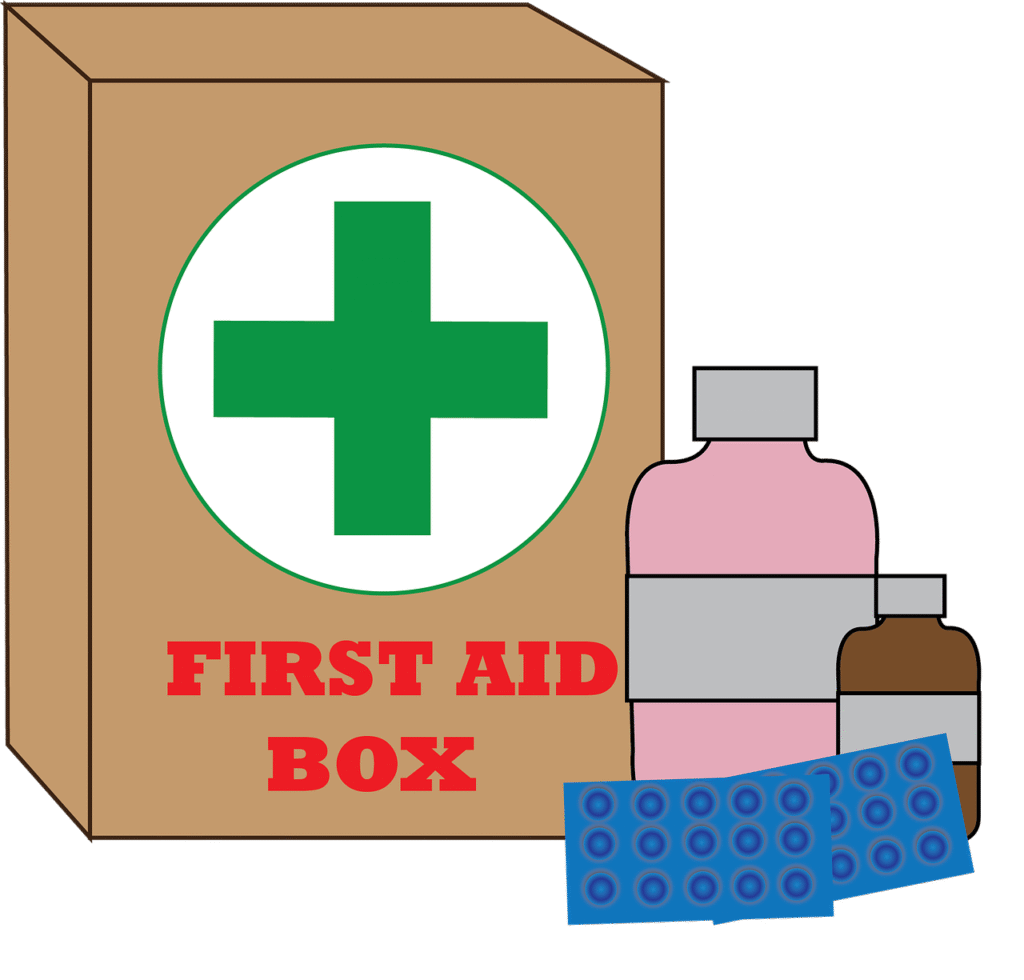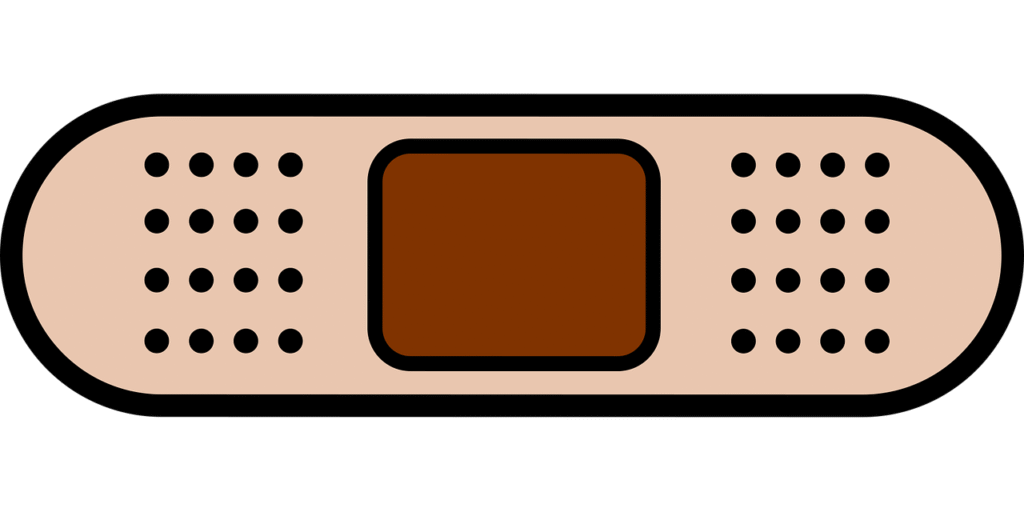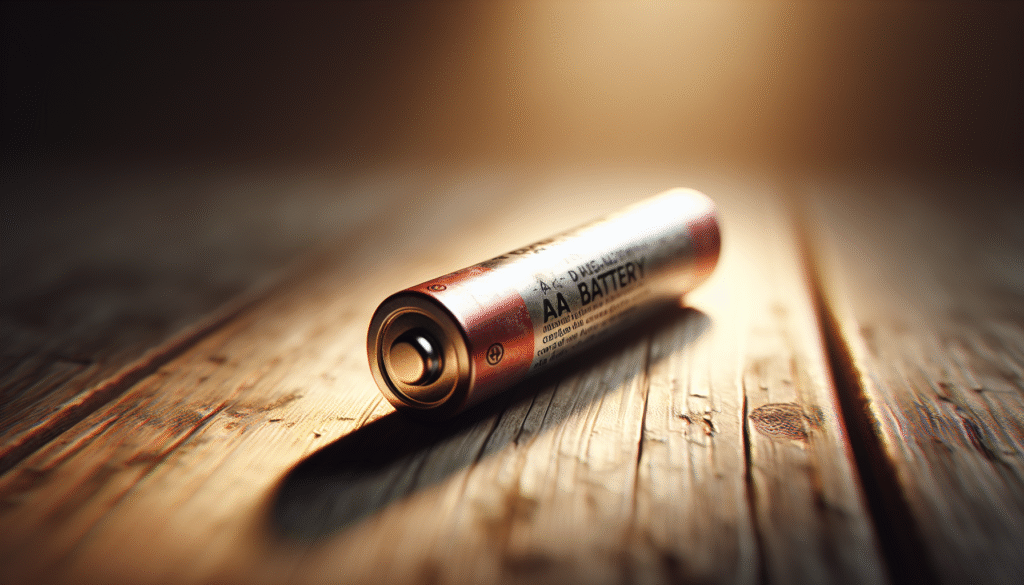Which emergency kit items are most often forgotten when you’re putting together supplies for an unexpected crisis?

Which Emergency Kit Items Are Most Often Forgotten?
You probably focus on food, water, and a flashlight when you think about an emergency kit. Those basics are critical, but many often-overlooked items make a huge difference in comfort, safety, and recovery after an incident.
This article breaks down the most commonly forgotten emergency kit items, why they’re overlooked, and practical steps you can take to include and maintain them so you’re truly prepared.
Why Items Get Forgotten
People tend to remember the most obvious needs first, like water and canned food, but not the less flashy items. You might assume you can improvise small things during an emergency, or you may simply forget to review the kit for personal and seasonal needs.
You’ll find that forgetting items often comes down to assumptions, lack of customization, or not updating the kit as your life changes. Understanding the reasons helps you prevent those gaps.
How To Use This Guide
This guide lists common omissions and gives practical solutions, checklists, and maintenance tips. Read sections that fit your situation and use the checklists to audit or build your kit.
You’ll be able to identify small but essential items you may have missed and adopt simple routines to keep your kit reliable.
Top Most-Often Forgotten Items — Quick Table
The table below summarizes items that commonly get missed, why they matter, and a simple suggestion for what to include.
| Item | Why It’s Often Forgotten | Why It Matters | What to Include (Minimum) |
|---|---|---|---|
| Prescription medications & copies of prescriptions | People assume they’ll have access to pharmacies | Interruptions can last days; running out is dangerous | 7–14 day supply + copy of prescription + list of dosages |
| Extra eyeglasses, contacts, or lens solution | Vision needs feel personal and sometimes neglected | Poor vision increases injury risk and lowers independence | Backup glasses, spare contacts, small solution bottle |
| Phone chargers & power banks (with appropriate cables) | You think a neighbor will have power | Communication and information access rely on power | 1–2 chargers + 1 high-capacity power bank + solar option |
| Cash (small bills & coins) | People assume card systems will work | Digital systems may be offline; cash still works | $100–200 in small bills, coins for machines |
| Female hygiene products & incontinence supplies | These are personal and easily overlooked | Comfort, dignity, and health affect well-being | Extra tampons/pads, menstrual cup, adult pads if needed |
| Infant supplies (formula, diapers, nipples) | New parents are overwhelmed and multitasking | Babies need continuous, specific care | 3–7 day supply of formula/diapers, manual pump if used |
| Pet supplies (food, meds, leash, carrier) | People often prioritize themselves | Pets depend on you and can complicate evacuations | 3–7 day food, meds, ID, leash, collapsible bowl |
| Important documents (IDs, insurance, wills) | You assume originals are safe at home | Loss of documents delays recovery and access | Copies (waterproof), digital backups, list of account numbers |
| Baby formula and bottles | Assumption that water/power will be available | Formula preparation can be unsafe without clean water | Ready-to-feed formula or enough for several days |
| Multi-tool & small repair kit | Focus on large tools, forget small fasteners | Small repairs can be critical | Multi-tool, duct tape, zip ties, small screwdriver set |
| N95 masks & allergy meds | Masks seem situational | Air quality hazards may arise | 2–4 N95 masks per person + antihistamines |
| Spare shoes & socks | You pack blankets but not footwear | Wet or damaged shoes cause blisters/injury | Sturdy shoes and several pairs of socks |
| Copies of keys | You assume you’ll have access to keys | Locked-out scenarios delay evacuation | House/car keys sealed in waterproof pouch |
| Manual can opener | You have canned food but not the tool | Canned food is useless without a can opener | Sturdy manual can opener |

Detailed Look at Frequently Forgotten Items
You’ll get better results when you understand why each item matters and how to build it into your kit. Below are deeper dives into items that commonly get left out.
Prescription Medications and Medical Supplies
People often forget to rotate and replace prescriptions or to include documentation. You can’t assume pharmacies will be open or will have your exact meds.
Include at least a 7–14 day supply, a list of medications with dosages and prescribing doctor contact info, and copies of prescriptions. If someone relies on injectables, oxygen, or other devices, make plans with healthcare providers for emergency refills and power needs.
Vision and Hearing Needs
You might assume your glasses or contacts will be fine, but breakage or loss happens in turns. Hearing aids need batteries, and spare lenses are often bulky but essential.
Keep an extra pair of glasses, a small repair kit, spare contact lenses and solution, or a sample bottle of saline. For hearing aids, include extra batteries in your kit and a drying pack if humidity is a concern.
Device Power and Communication
You probably pack a power bank, but often forget the right cables, battery capacity, or alternatives like solar chargers. Also consider chargers for multiple devices, and a small portable FM/NOAA radio for updates if cellular networks fail.
Store chargers with labels for which device they serve. Consider a high-capacity power bank (at least 20,000 mAh) and a hand-crank or solar option for extended outages.
Cash and Small Change
In modern life, you rely on cards and contactless payments. During emergencies, network outages and power failures make cash essential. Tucked-away small bills and coins allow you to pay for gas, food, or transportation when electronic systems fail.
Store a mix of $1, $5, and $10 bills and keep some coins for vending machines, tolls, or transit.
Personal Hygiene and Sanitation Supplies
Toiletries are often thought of last. Sanitation needs—soap, hand sanitizer, toilet paper, wipes, and hygiene products—affect health and morale.
Include: toilet paper, sanitary products, a small trowel for outdoor waste if camping, heavy-duty trash bags, and a supply of hand sanitizer and soap.
Infant and Child Supplies
Parents tend to forget spare bottles, formula, and diapers during emergency packing. Children and infants need familiarity and items that comfort them.
Keep at least a 3–7 day supply of diapers, baby wipes, formula (ready-to-use or powdered with clean water plans), a manual breast pump if used, favorite toys, and a child-size blanket.
Pet Supplies
Pet owners sometimes plan for themselves and overlook pets. Pets will stress the whole family when you can’t care for them.
Pack pet food for several days, treats, a small first-aid kit, medications, ID tags, a leash, and a carrier or crate if evacuation is needed.
Important Documents and Digital Backups
You might assume your documents are safe at home, but flooding, fire, or theft can remove them. Copies and digital backups help with insurance claims, identity verification, and access to funds.
Include waterproof copies of IDs, insurance policies, medical records, property deeds, birth certificates, and a USB drive or cloud-synced encrypted folder.
Comfort and Mental Health Items
Comfort items are easy to forget but important for morale. Stress, sleep disruption, and trauma can impair decision-making.
Include a small pillow, a favorite blanket, games or books, earplugs, eye masks, and basic comfort snacks. Also think about medication for anxiety or depression and a list of emergency contacts.
Tools and Repair Supplies
Big tools get attention, but small repair items do the most immediate work. Duct tape, zip ties, a multi-tool, paracord, and a patch kit for inflatables are often missing.
These items let you fix a tarp, seal a crawlspace, or mend a tent, and they’re lightweight and inexpensive.
Seasonal and Climate-Specific Gear
You might forget seasonal needs like sunscreen, insect repellent, or snow gear. Your kit should reflect the climate and typical hazards of where you live.
In hot climates, include electrolyte packets and a cooling cloth. In cold climates, add hand warmers, thermal layers, and a sleeping bag rated for low temperatures.
Special-Needs and Population-Specific Items
You should customize your kit to match who you are and who you live with. Different ages and medical needs change the essentials.
For Seniors and Mobility-Impaired People
You’ll need extra medical supplies, assistive devices, spare batteries, and copies of prescriptions and healthcare proxies. Mobility devices or spare parts, like cane rubber tips, can be crucial.
Think about accessible containers, easy-to-open packaging, and labeled medications with clear instructions.
For People With Chronic Conditions
If you manage a chronic condition (diabetes, cardiac disease, asthma), you need extra medication, supplies, monitoring devices, and a care plan.
Keep an extra glucose meter with test strips, emergency insulin supplies and syringes if applicable, inhalers, and a written action plan for caregivers.
For Parents and Guardians
You’ll need child-specific items—diapers, formula, snacks, clothes, and comfort items. Also include emergency contact cards and permission forms in case caregivers change during an evacuation.
Create an age-based checklist and store smaller items in labeled pouches for quick retrieval.
For People With Pets
You should include pet medications, up-to-date vaccination records, a photo of your pet, microchip info, and a carrier. Some shelters don’t accept pets, so also have a plan for pet-friendly lodging.
Create a separate pet supply bag to avoid accidentally leaving items behind.

How to Audit and Maintain Your Emergency Kit
Audits prevent expired meds, degraded batteries, and outdated documents from making your kit ineffective. You’ll need a simple maintenance routine.
Create a Quarterly Review Routine
Every three months, check dates, batteries, and functionality. Rotate perishable food, test radios and chargers, and make note of items that need replacing.
Keep a log inside your kit with dates of last audit and replacement history to track maintenance easily.
Replace or Rotate Consumables
Perishable items should be rotated into regular use before expiration. For example, use older canned goods and replace them with fresh stock. For medications, work with your pharmacy to get emergency refills if needed.
Label items with purchase or expiration dates so you can prioritize replacements.
Store Properly and Label Clearly
Use waterproof containers for documents, vacuum-sealed bags for clothing, and clear labeling for quick identification. Put a contents list on the lid or inside the bag.
Store the kit in a cool, dry place that you and family members can access quickly during an emergency.
Where People Typically Store Kits (and Why That Can Lead to Forgetting Items)
You might keep a kit in the garage, basement, or closet, but these spots can be problematic. Extreme temperatures in garages and basements can damage batteries and medicines, and you may forget the kit in a rarely-visited area.
Store primary kits in an accessible, central location inside the home (entry closet, hallway) and secondary kits in cars or backpacks.

Creating Multiple Kits: Home, Car, Work, and Go-Bags
Having separate kits for different scenarios is helpful because you don’t always have time to reach the main kit. You’ll want tailored contents and priorities for each location.
Home Kit
Your base kit should be comprehensive and include a multi-day food and water supply, full medical kit, tools, sleeping gear, and document copies.
You’ll also keep specialty items for family members and pets here.
Car Kit
Your car kit needs to be compact and focused on immediate survival and signaling. Include water, compact food, a blanket, extra clothes, a flashlight, jumper cables, and tire repair tools.
Also include a small first-aid kit and emergency triangle or flares for roadside safety.
Work Kit
At work, you should have a smaller kit that addresses shelter-in-place needs: water, shelf-stable snacks, basic medications, whistle, and light source.
Store essential contact info, an extra phone charger, and cash.
Go-Bag (Grab-and-Go)
Your go-bag should get you out the door quickly for evacuation scenarios. Pack clothing, important documents, a compact sleeping option, a compact stove or food bars, and quick-access meds.
Make sure everyone in your household knows where go-bags are kept.
Practical Packing Strategies
Organization reduces forgetting items at packing time. Your kit should be logically arranged and all family members should understand the layout.
- Use labeled zip pouches for categories (meds, hygiene, tools).
- Keep everyday essentials (phone chargers, cash, keys) in a small grab pouch.
- Pack by weight and accessibility—heavier items at the bottom, frequently used items on top.
- Make a concise checklist for each kit and tape it inside the lid.

Budget-Friendly Alternatives
You don’t need to spend a fortune to be prepared. You can replace expensive items with affordable, effective alternatives without sacrificing safety.
- Use homemade water purification (boiling, bleach dosing guidelines) in addition to purifying tablets.
- Buy generic brands for first aid and hygiene supplies.
- Reuse sturdy containers and backpacks.
- Prioritize the high-impact, low-cost items first (water, first aid, multi-tool, flashlight).
Psychological Preparedness and Information
You’ll be more effective during emergencies if you have a plan and supporting information. Prepare a communications plan and know evacuation routes.
Write down emergency contacts, a meeting place, and out-of-area contacts. Make sure everyone knows where IDs and keys are kept.
Common Mistakes to Avoid
Knowing what people do wrong helps you feel vigilant. Common mistakes include relying entirely on digital documents, ignoring pet needs, and failing to update meds.
Avoid these by regularly auditing, customizing kits, and rehearsing evacuation plans with all household members.
Example Checklists (Detailed)
Below are detailed checklists you can adapt. Each subsection will include a couple sentences explaining why the items are grouped.
Essential Home Kit Checklist
This checklist covers items to sustain you at home during a multi-day emergency. Keep items organized and label substitutes clearly.
- Water: 1 gallon per person per day for 3–7 days
- Food: 3–7 days of non-perishables (canned goods, protein bars)
- Manual can opener
- First-aid kit with personal meds (7–14 day supply)
- Flashlights and extra batteries
- Radio (battery-powered/hand-crank/solar) and extra batteries
- Phone chargers, power bank (20,000 mAh), and solar option
- Cash (small bills) and coins
- Blankets/sleeping bags and extra clothing
- Duct tape, paracord, multi-tool
- Sanitation: toilet paper, moist wipes, trash bags
- Fire extinguisher (small household type)
- Important documents in waterproof pouch
- Copies of IDs and emergency contact list
- Pet supplies (food, meds, leash, carrier)
- Extra eyeglasses and hearing aid batteries
- Comfort items (books, cards, a small game)
Car Kit Checklist
A car kit helps you if you get stranded or must evacuate by vehicle suddenly. Keep compact, durable items that fit your vehicle.
- Water bottles (1–3 liters)
- Non-perishable snacks (energy bars, nuts)
- Blanket, extra socks, hat, gloves
- Jumper cables, tire repair kit, small air pump
- Flashlight with extra batteries
- Portable power bank and charging cables
- Small first-aid kit and basic medications
- Multi-tool, duct tape, rope
- Reflective triangle or warning flares
- Maps (paper) and printed evacuation routes
- Extra windshield washer fluid and basic tools
Work Kit Checklist
Your work kit should let you shelter in place for a day or two. Keep it in a locker or under your desk.
- Water (1–2 liters)
- Non-perishable snacks
- Basic first aid and personal meds
- Phone charger and power bank
- Radio or small information device
- Emergency contact list and key IDs
- Warm layer and comfortable shoes
- Hygiene items (toothbrush, sanitary products)
How to Prepare for Specific Scenarios
Different emergencies require different focuses. You’ll want to tailor your kits to the likely risks in your area: hurricanes, earthquakes, wildfires, winter storms, or floods.
Wildfire or Smoke Events
If you live near wildfire risk, include N95 masks and eye protection, and consider a plan to evacuate quickly. Smoke affects breathing and long-term exposure is dangerous.
Prepare a “go-bag” with masks, a small air purifier (if possible), and medications for respiratory conditions.
Flooding
For flood-prone areas, protect documents in waterproof containers and store kits up off the ground. Include water purification tablets and plan a route to higher ground.
Keep clothing and footwear in waterproof drybags and consider sandbags or other temporary barriers.
Winter Storms
Cold-weather kits need insulated sleeping gear, extra fuel if using safe heating devices, and traction aids for walking. Hypothermia is a major risk.
Pack chemical hand warmers, thermal blankets, and a safe alternative heating source along with carbon monoxide detectors.
Earthquake
For earthquakes, secure heavy furniture and include head protection, sturdy shoes, a helmet or hard hat, and a whistle for rescuers. Aftershocks can cause additional damage.
Keep a “shelter-in-place” kit near your bed and a go-bag ready by the door.
Putting the Checklist into Action: A 30-Minute Audit
You can quickly audit your kit with a few focused steps. This routine helps you update without getting overwhelmed.
- Step 1 (5 minutes): Open your kit and read the contents list.
- Step 2 (10 minutes): Check expiration dates on meds, food, and batteries. Replace items as needed.
- Step 3 (5 minutes): Test electronics—flashlights, radios, power banks.
- Step 4 (5 minutes): Verify important documents are current and waterproofed.
- Step 5 (5 minutes): Update your log with the audit date and any additions needed.
Repeat every three months and after major life changes.
Final Tips for Not Forgetting
You’ll be prepared long-term if you make emergency readiness part of your routine. Keep it visible, accessible, and discussed.
- Assign responsibilities to family members for kit maintenance.
- Keep a duplicate list in your phone and on paper in the kit.
- Rehearse your evacuation plan so you physically practice grabbing the kit.
- Make a habit of restocking when you use an item for everyday life.
Summary and Final Checklist Table
You should finish by doing a focused audit and adding the frequently forgotten items to your kits. Below is a compact final checklist table that you can print or copy into your planning notes.
| Category | Most Forgotten Items to Add | Minimum Quantity |
|---|---|---|
| Medications | Prescription spare + copies of Rx | 7–14 day supply |
| Vision/Hearing | Spare glasses, contact solution, hearing aid batteries | 1 spare pair, solution bottle, batteries |
| Power/Communication | Extra chargers, 20,000 mAh power bank, solar charger | 1–2 chargers, 1 bank |
| Cash | Small bills and coins | $100–200 |
| Hygiene | Feminine products, incontinence supplies, toilet paper | Several days’ worth |
| Infant/Child | Formula, diapers, spare clothes, comfort items | 3–7 day supply |
| Pets | Food, meds, carrier, leash, records | 3–7 day supply |
| Documents | Waterproof copies, USB/cloud backups | All IDs & policies |
| Tools/Repairs | Multi-tool, duct tape, zip ties, paracord | 1 each |
| Comfort & Mental Health | Pillow, blanket, games, anxiety meds | 1–2 items per person |
| Seasonal | Sunscreen, hand warmers, insect repellent | As season requires |
You’ll reduce stress and hazard by adding small, overlooked items to your kit and keeping everything current. Regular audits and family familiarity with kit locations and contents will make your emergency plan practical, not just theoretical.
If you want, you can tell me about your household (number of people, pets, medical needs) and I’ll give you a tailored checklist and priority list for your kits.

